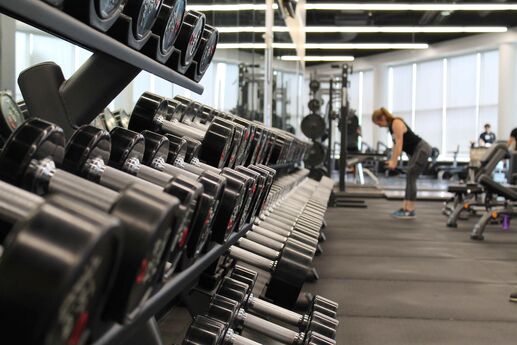Stoke Your Competitive Fire!
Champions share a hard-to-define quality. It’s a combination of competitive drive, focus and desire that makes them winners -- in sports, in the classroom and in life. You want to be that guy, but perhaps you think you can’t be. Maybe you believe that the winners of the world are born, not made.
If so, think again.
Research shows that the will to succeed is as much a factor of nurture as it is nature. A 2009 study compared competitive drive among members of a primarily patriarchal tribe in Tanzania and a community in India in which women have greater authority and social standing. The researchers -- from The University of Chicago and Columbia University -- found that in the Tanzanian tribe, women were less competitive. But in the Indian community, the reverse was true: The women were more competitive than the men.
The implication: Competitive drive is a learned behavior.
“Granted, some may be born with a mentally tougher edge,” says Greg Chertok, a sport-psychology consultant who works with young athletes at The Physical Medicine and Rehabilitation Center in Englewood, N.J. “But any athlete -- any person -- who is willing to put in the work can develop this as well.”
Here’s how to develop the competitive drive and mental toughness of a champion.
1. Identify your opponent
First, stop and consider who or what it is you’re competing against.
“Most of us think of competitiveness as the drive to be No. 1,” says former NCAA wrestling champion Matt Furey, author of a 2009 memoir, The Unbeatable Man. “That’s OK sometimes, but chances are you’re not going to be the best in the world at whatever you’re doing. So does that mean you’re going to hide your talents under a rock? How about, instead, you let the very best you have shine?”
In other words, stop comparing yourself to others, and start playing the game of life as a healthy competition against yourself -- striving to set and meet goals, and to do your best.
2. Cultivate your competitive attitude
“Excelling often means taking yourself out of your comfort zone,” says Chertok. At the point when most people want to quit, real competitors battle on. You can help develop that go-the-distance attitude by practicing it. During moments when you feel like finishing your workout early or closing the book during homework … make the decision. Do one more set. Read one more chapter. “Flip the competitive switch!” says Chertok.
3. Find your peak performance number
We all have a different energy level at which we perform best. Chertok asks his athletes to find that level on a 1 to 10 scale, with 1 being cucumber-cool; 5, a controlled intensity; and 10, a Ray Lewis-like, frothing-at-the-mouth hunger.
Identifying and then getting yourself to your optimum intensity level (Chertok recommends deep breathing to lower your intensity, and your favorite music to amp it up) is going to raise your chances of coming up big when the game is on the line.
4. Take small daily steps to success
Doing one thing today -- one thing that will make you stronger, faster or better prepared -- will help get you closer to your goal. It’s a technique used by Olympic athletes during their long years of training between the quadrennial Games. “Every day they try to do something, even a small something, that gets them closer to a gold medal,” explains Chertok.
So let’s say your goal is to be the starting centerfielder on your school’s baseball team. What steps can you take now to reach that goal? Maybe you need to get stronger, throw the ball farther, hit better?
Here are three days of small, realistic and measurable goals:
- Today, I will bench-press the heaviest weight I can handle for eight to 10 reps.
- Tomorrow, I will go down to the field and play long toss with my buddy -- and make 10 more throws each time we do it.
- The day after, I will go down to the batting cage and take 10 more swings.
Over weeks and months, those extra reps, throws and swings will add up to you being a vastly improved ballplayer.
5. Positively the way to go
In his 2007 book How Lance Does It, author Brad Kearns examines the factors that helped Lance Armstrong come back from cancer to win seven Tour de France titles. He lists a positive attitude as Armstrong’s “Success Factor 1.”
“Lance developed a positive attitude so resilient and a perspective so enlightened that he could pedal his bike through all kinds of adversity and obstacles and emerge victorious,” writes Kearns.
Note that word: developed. When cancer threatened his life, he had every reason to be negative. But Armstrong realized that a positive attitude is a choice. Again, that drive to be a winner, to succeed on the field and off, is not in your genes. It’s in your mind.
So will you make up your mind today to start competing like a champion … to be a winner? It’s up to you.






